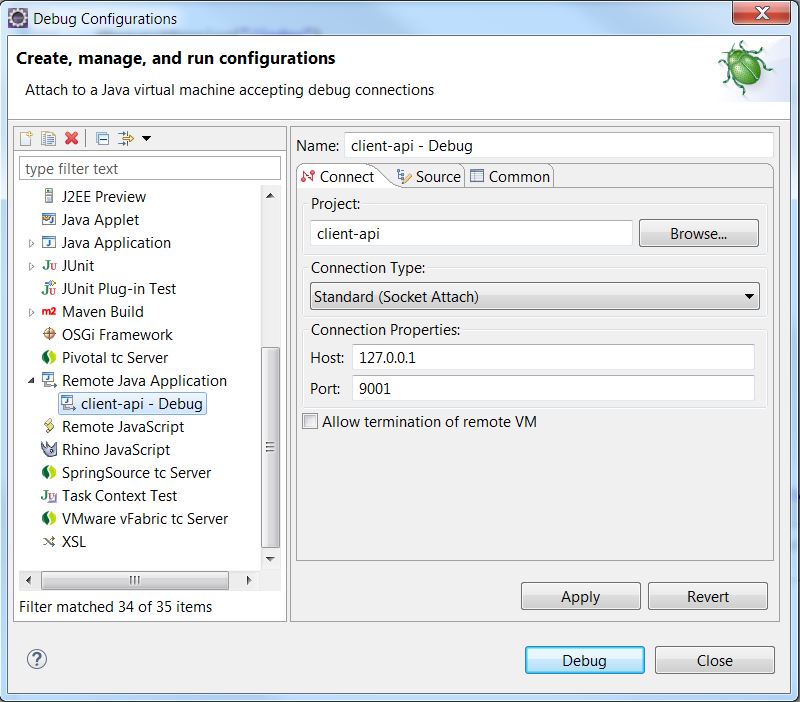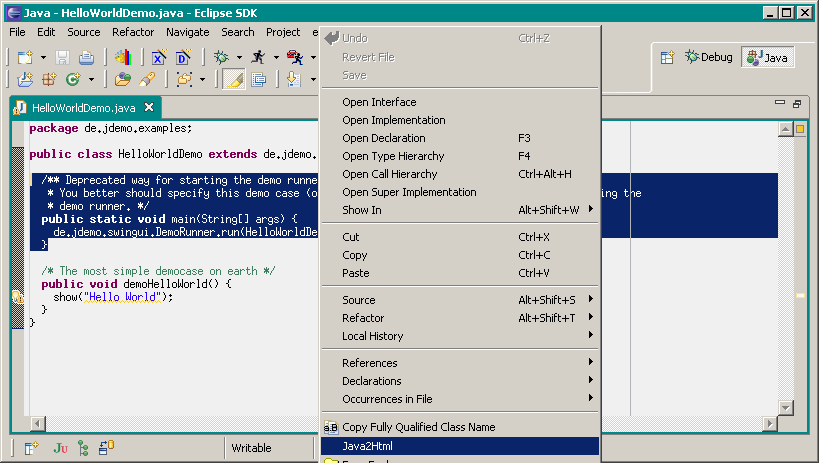

- #Java memory monitor eclipse how to
- #Java memory monitor eclipse update
- #Java memory monitor eclipse code
- #Java memory monitor eclipse free


see the spikes in memory usage and press the Perform GC button which will release the memory. Eclipse should not be calling specifically for non-virtual memory, but it will run really slow if it doesnt have enough physical memory. The small icon display on right side will enforce the garbage collection. Java profilers like JProfiler and YourKit can also help monitor memory usage as they have the option to analyze the heap. Then perform the task that slows down your application and analyze the monitor and memory pools tabs. If you look at the below picture, the heap details are shown in the status bar of the Eclipse application. It will look like as in the below screenshot. Windows -> Preferences -> General -> Show heap status (check box) The most common types are detailed below: 1. You can display a memory monitor using any type of SWT widget. It is a flexible view that allows debug implementers to present memory monitors in ways that make sense to their users. Profile CPU, memory and thread problems with Dynatrace industry. Memory leaks can be of various types, depending on how they happen. The Memory View is provided by the debug framework and allows users to examine memory from their application. For detailed information you have to use VisualVM. You can see the threads in the Debug view which is in the Debug perspective by default.
#Java memory monitor eclipse code
Navigate to the following path to enable this feature: Heap Status Settings in Eclipse Improve the performance of your Java code with continuous insights into your applications. When you have started your application in debug mode. Graph legend: CYAN LINE: heap memory usage after the collection. In Eclipse, you can change the settings to view the current memory usage in heap and fore the Garbage Collection to run. The garbage collection graph is useful for identifying anomalies in your application. This would internally slow down the process to run the Garbage Collection threads.

#Java memory monitor eclipse free
Whenever it reaches the maximum level, eclipse triggers the Garbage Collection to free the memory. If the usage reaches the maximum level, the performance of your eclipse would be very slow. These tools are focused on the performance of individual web requests or transactions. Standard java profiling tools are focused on the performance of all methods across the entire application. Tracing Java Web Requests and Transactions. Eclipse allocates the pre-defined heap memory for its own use. VisualVM, JProfiler, YourKit and Java Mission Control. This command provides the total free and used memory information of your VM/node.
#Java memory monitor eclipse how to
("Currently Totally Available Heap Space = "+ ((env.maxMemory()-env.totalMemory()) + env.This example illustrates how to view the current status of heap in the JVM where eclipse application is running. Basic Linux Commands to Monitor Memory and CPU. Well organized and easy to understand Web building tutorials with lots of examples of how to use HTML, CSS, JavaScript, SQL, Python, PHP, Bootstrap, Java. JVM Monitor automatically finds the running JVMs on local host and you can easily start monitoring them. JVM Monitor would be useful to quickly inspect Java applications without preparing any launch configuration beforehand. ("Unassigned Heap = " + (env.maxMemory()-env.totalMemory())) JVM Monitor is a Java profiler integrated with Eclipse to monitor CPU, threads and memory usage of Java applications. ("Currently Used Heap = " + (env.totalMemory()eeMemory()) ) ("Available in Current Heap = freeMemory() = " + env.freeMemory()) //current heap will extend if no more freeMemory to a maximum of maxMemory ("Current Heap Size = totalMemory() = " + env.totalMemory()) //currently assigned heap ("Max Heap Size = maxMemory() = " + env.maxMemory()) //max heap size from -Xmx, i.e. With Java 17-19 therefore I propose to use the heap size functions of getRuntime(): Runtime env = Runtime.getRuntime()
#Java memory monitor eclipse update
Maybe an useful update using Java 17 to 19:Īfter several trials with getRuntime() and old/Eden/Survivor Space I came back to use getRuntime() which seem to be 'faithful' now:


 0 kommentar(er)
0 kommentar(er)
